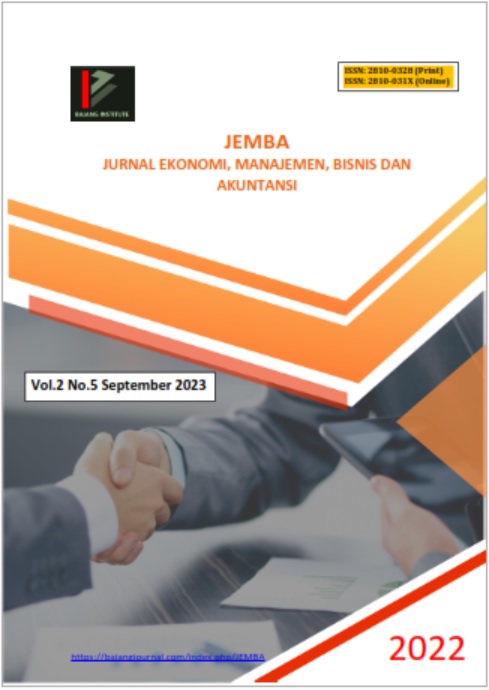STRATEGI PENGEMBANGAN USAHA DENGAN PENDEKATAN BUSINESS MODEL CANVAS PADA USAHA TILAPIA FARM
DOI:
https://doi.org/10.53625/jemba.v2i5.6568Keywords:
Tilapia Cultivation, Tilapia Business Analysis,, CultivationAbstract
This study aims to identify tilapia business development strategies in the TILAPIA FARM business in the research area using the Business Model Canvas approach. Tilapia is a fishery commodity that has high economic potential in the research area, but is often faced with various challenges in the market and intense competition. The results of the study show that the Business Model Canvas approach to the TILAPIA FARM business provides a clear and comprehensive picture of all the key elements in developing a tilapia business. Market segments are identified to determine potential target markets, and a unique value proposition is established to attract customers. Distribution channels and relationships with customers are an important focus for achieving customer satisfaction and increasing customer retention. Sources of income are identified from various sources, such as direct sales, online sales, Main resources including cultivation facilities, labor, and supporting equipment. The main activities which include stocking fish seeds to harvesting, and processing are identified as the core of the tilapia business. In addition, key partners in the fishery value chain are of key importance in increasing efficiency and expanding business outreach. The cost structure is carefully planned to ensure optimal profit and manage the risks that may arise. This study concludes that the use of the Business Model Canvas helps TILAPIA FARM tilapia business in planning a structured and effective strategy. Therefore, it is suggested that TILAPIA FARM always monitors and evaluates business performance, and is always ready to adapt to market changes that are constantly moving. In this way, tilapia business development can run better and sustainably amidst the dynamics of the fishing industry
References
Aliyas, 2. (2016). FORTIFIKASI PAKAN IKAN DENGAN TEPUNG RUMPUT LAUT. Pertumbuhan dan Kelangsungan Hidup Ikan Nila (Oreochromis sp.). Yang diPelihara Pada Media Bersalinitas, jurnal sains dan teknologi tadulako 16 (1),19 - 27.
Effendi, H. (2003). Telaah Kualitas Air bagi Pengelolaan Sumber daya dan lingkungan perairan . Yogjakarta: Kanisius.
Moleong, L. (2012). Metodologi Penelitian Kualitatif. PT Remaja Rosdakarya.
Nurul. (2018). Pemberdayaan Kelompok Wanita Tani Dalam Diversifikasi Olahan. Jurnal Pemberdayaan: Publikasi hasil pengabdian kepada masyarakat Vol. 2 no.2.
Osterwalder, A. d. (2012). Business Model Generation. PT.ElexmediaKomputindo.
Pratama, O. (2020, Juli 1). Konservasi Perairan Sebagai Upaya menjaga Potensi Kelautan dan Perikanan Indonesia. Retrieved from Kkp.go.id: https://kkp.go.id/djprl/artikel/21045-konservasi-perairan-sebagai-upaya-menjaga-potensi-kelautan-dan-perikanan-indonesia
Robisalmi, A. D. (2020). Pengembangan Usaha Kampus Melalui Inovasi Teknologi Budidaya Ikan Nila Dengan Sistem Modular pada Kolam Terpal Di Kabupaten Pangkajene Kepulauan. Evaluasi Performa Pertumbuhan dan Heterosis Persilangan antara Ikan Nila Nirwana (Oreochromis niloticus) Betina dengan Ikan Nila Biru (Oreochomis aureus) Berita Biologi, Jurnal Ilmu Hayati. DOI: beritabiologi.v19i1.3758 1-11, , Berita Biologi, Jurnal Ilmu hayati .
Sukadi, M. F. (2002). Peningkatan Teknologi Budidaya Perikanan. Jumal lktiologi Indonesia Vol.2, No. 2, Tahun 2002: 61-66.
Tjarmana, M. (. (1999). Sistem Budi Daya Ikan. . ANALISIS KUALITAS AIR PADA LOKASI BUDIDAYA IKAN AIR TAWAR DI KECAMATAN SUWAWA TENGAH.












